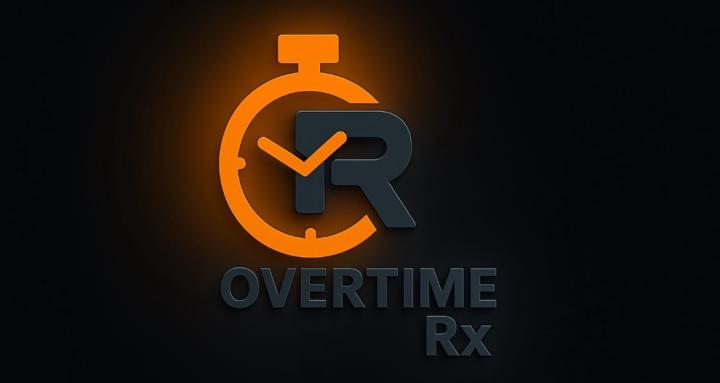Aug 13 • Injury Prevention
💡 Recovery After Practice — What Really Works
As summer winds down and fall sports ramp up, recovery should be at the front of your performance plan. The truth? What you do in the 60 minutes after practice or your workout often matters more for tomorrow’s performance — and injury risk — than most athletes realize.
Keep it simple:
- Sleep — your #1 recovery tool
- Fuel — protein + carbs within an hour
- Light movement — walk, stretch, mobility
- Nervous system reset — breathe, relax, downshift
Extra tools like cold water immersion, compression, or recovery boots? They have their place, but they’re not everyday essentials. I’ll dive into when and how to use them soon.
Recovery Fundamentals That Actually Work 💡
- Sleep — the #1 recovery tool. Both quality and quantity drive most gains in performance and repair.
- Post-practice nutrition — ~0.3 g/kg protein plus carbs supports muscle repair and glycogen replenishment.
- Active cool-downs — light movement helps subjective recovery and metabolic clearance.
- Cold water immersion — great for acute soreness or quick turnaround between matches, but using it after every session can blunt long-term strength and hypertrophy. Use strategically: tournaments, congested schedules, or pre-competition.
Bottom line: Consistent sleep, proper fueling, and smart load management beat fancy gadgets 9/10 times.
Post-Practice 60-Minute Blueprint
0–10 min — Active cool-down
- 5–10 min easy movement (walk, easy bike, light jog).
- Add 2–3 sport-specific dynamic drills (hip CARs after sprints due to the amount we are using our hips, ankle mobility after cutting, T-spine rotations after throwing).
10–30 min — Replenish & prime
- Nutrition: snack/meal within ~30–60 min: ~0.3 g/kg protein + carbs (adjust carbs to session intensity/duration. The longer the session, more carbs needed).
- Hydration: replace sweat + electrolytes if session was long/hot. Pro tip: Weigh yourself before and after a sweaty workout. After look up a calculator online to help to determine the amount of liquid you need to replenish.
- Micro-reset (2–5 min): 1–2 stability drills or a short diaphragmatic breathing reset.
30–60 min — Reset & plan
- Nervous-system downregulation: 3–6 min slow diaphragmatic breathing (or guided breathing).
- Tissue care if needed: gentle heat for stiffness; ice only for acute swelling.
- Quick log: record RPE(rate of perceived exertion which is graded on a scale from 1-10), soreness, and sleep last night — use this to tweak tomorrow’s load.
That night
- Prioritize 7–9 hours of quality sleep. Use a 30–60 min screen-free wind-down and low-arousal activities.
When to use the “fancy” stuff (context matters)
- Cold-water immersion (CWI): Good for rapid relief between matches/tournament play especially when high intensity is close together. Avoid routine use after heavy resistance training when hypertrophy/strength is the priority.
- Compression garments / pneumatic devices: Modest benefits for soreness and perceived recovery; low downside — good adjunct for travel or long standing.
- Percussion / massage: Helpful for subjective soreness and range-of-motion prep; treat as adjunct to active recovery.
- NSAIDs: Short-term pain relief only under clinical guidance — they can impair tissue repair in some contexts.
Monitoring & how sport science implements recovery
- Use a daily wellness check (sleep, soreness, mood), session RPE, and objective load metrics (GPS/volume/jump tests, reps, sets, total load) to guide training.
- HRV and jump-testing are common (optional) objective tools teams use alongside subjective monitoring to adjust load.
Copy-paste: Checklist to write down each evening for optimal recovery
Post-Practice 60-min checklist:
- 5–10 min active cool-down (walk/light jog + 2 dynamic drills)
- Snack/meal: ~0.3 g/kg protein + carbs within 30–60 min; hydrate + electrolytes if needed
- 2–5 min mobility/control reset (DNS breathing or 1 stability drill)
- 3–6 min diaphragmatic breathing to downregulate
- Log RPE, soreness & sleep → adjust tomorrow’s load as needed
The bottom line?
Prioritise high-value, low-risk actions (sleep, nutrition, light movement, monitoring). Use modalities like CWI or compression strategically when the acute benefit outweighs potential adaptation trade-offs.
Which part of recovery do you focus on the most? Reply with your number below and why!
1. Cool Down Movements
2. Nutrition
3. Sleep
2
7 comments
powered by

skool.com/the-movement-prescription-1200
Train smart. Prevent injuries. Overtime Rx helps athletes stay in the game with rehab-informed strength and real sports insight.
Suggested communities
Powered by
